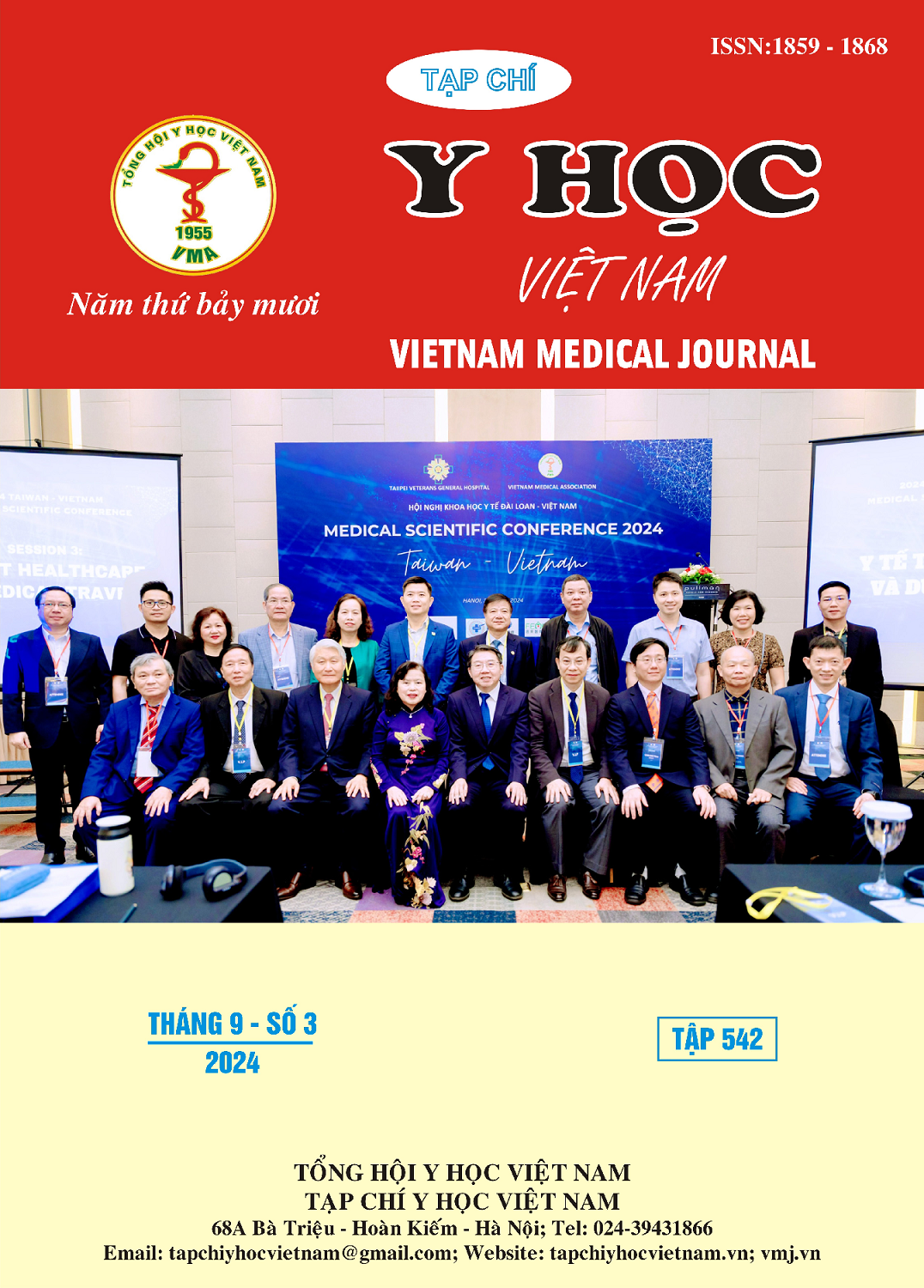EVALUATION OF THE RESULTS OF ARTIFICIAL INTELLIGENCE-ASSISTED IN COLON POLYP DETECTION
Main Article Content
Abstract
A randomized controlled single – blind study was conducted to compare polyp/adenoma detection rate (PDR/ADR), polyp/adenoma missing rate (PMR/AMR), adenomas per colonscopy (APC), adenomas per positive patient between two groups of colonoscopies with and without the support of artificial intelligence (AI). Endoscopists withdrew the scope twice, each time for a minimum of 6 minutes. The first withdrawal was with or without the support of artificial intelligence. The study recruited 74 patients, including 36 conventional colonoscopies and 38 colonoscopies in the group using artificial intelligence system. There were no differences in age, gender, clinical symptoms, Boston scores, withdrawal time, endoscopist experience between the two groups. Polyps detected during the examination were recorded for location, morphology according to Paris classification, size, and histological results. During the first examination, 92 polyps were detected with 44 in the control group and 48 in the intervention group. In the second examination, an additional 10 and 12 polyps were found in the control and intervention group, respectively. PDR, PMR, ADR, AMR in the control group were 44,4%, 25%, 33,3%, 22,2%, respectively. These number of the intervention group were 52,6%, 22,7%, 28,9%, 20,7%, respectively. APC, APP of the control group were 1 and 3, these number of the intervention group were 0,76 and 2,64. There was no significant differences between two group.
Article Details
Keywords
Artificial intelligence (AI), polyp/ adenoma detection rate, polyp/adenoma miss rate.
References
2. W. B. Strum, “Colorectal Adenomas,” N Engl J Med, vol. 374, no. 11, pp. 1065–1075, Mar. 2016, doi: 10.1056/NEJMra1513581.
3. P. Wieszczy, J. Regula, and M. F. Kaminski, “Adenoma detection rate and risk of colorectal cancer,” Best Pract Res Clin Gastroenterol, vol. 31, no. 4, pp. 441–446, Aug. 2017, doi: 10.1016/j.bpg.2017.07.002.
4. Tkl L. et al., “Computer-assisted detection versus conventional colonoscopy for proximal colonic lesions: a multicenter, randomized, tandem-colonoscopy study,” Gastrointestinal endoscopy, vol. 97, no. 2, Feb. 2023, doi: 10.1016/ j.gie.2022.09.020.
5. P. Wang et al., “Lower Adenoma Miss Rate of Computer-Aided Detection-Assisted Colonoscopy vs Routine White-Light Colonoscopy in a Prospective Tandem Study,” Gastroenterology, vol. 159, no. 4, pp. 1252-1261.e5, Oct. 2020, doi: 10.1053/j.gastro.2020.06.023.
6. Đào Việt Hằng và cộng sự. “Nghiên cứu đánh giá độ chính xác của thuật toán Efficientnet trong phát hiện và khoanh vùng polyp đại tràng” Tạp chí y học Việt Nam 509 (1), 2021, p319-322
7. S. Wang, A. S. Kim, T. R. Church, D. G. Perdue, and A. Shaukat, “Adenomas per colonoscopy and adenoma per positive participant as quality indicators for screening colonoscopy,” Endosc Int Open, vol. 8, no. 11, pp. E1560–E1565, Nov. 2020, doi: 10.1055/a-1261-9074.
8. Mahsa Ahadi and G. Aj, “The 2019 World Health Organization Classification of appendiceal, colorectal and anal canal tumours: an update and critical assessment,” Pathology, vol. 53, no. 4, Jun. 2021, doi: 10.1016/j.pathol.2020.10.010.
9. E. S. Boroff, S. R. Gurudu, J. G. Hentz, J. A. Leighton, and F. C. Ramirez, “Polyp and adenoma detection rates in the proximal and distal colon,” Am J Gastroenterol, vol. 108, no. 6, pp. 993–999, Jun. 2013, doi: 10.1038/ajg.2013.68.
10. Đào Việt Hằng và cộng sự. “Kết quả ứng dụng nội soi đại tràng có hỗ trợ trí tuệ nhân tạo trong phát hiện polyp đại tràng gần” Tạp chí y học Việt Nam 519 (2), 2022, p123-127


